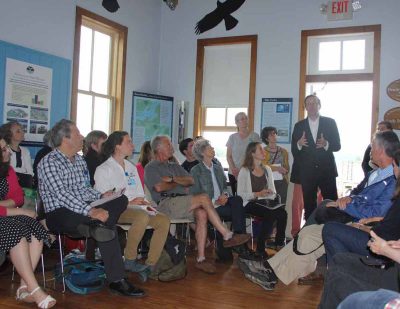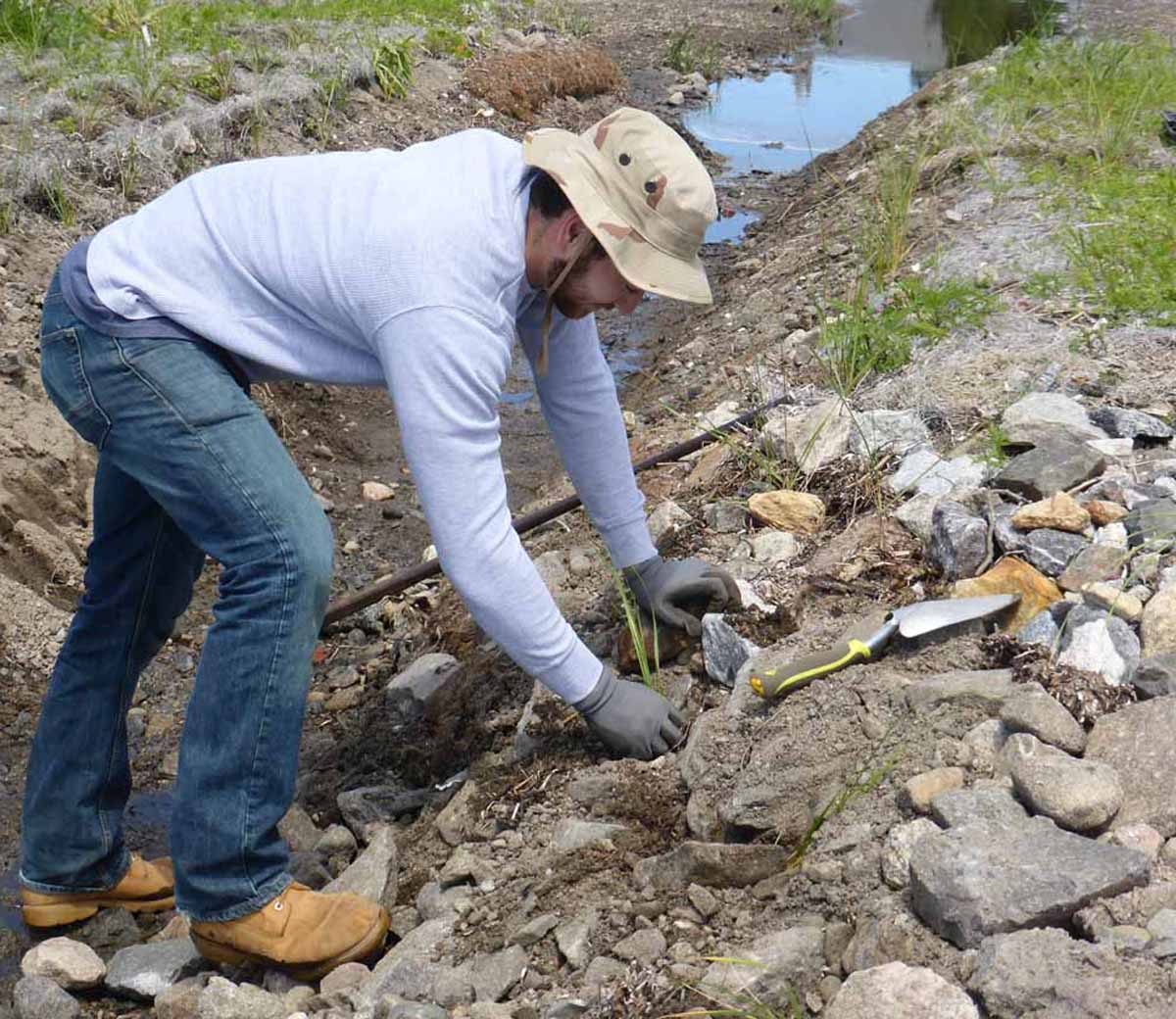
By Judy Benson
Essex – Federal funding for projects that protect shorelines using natural materials and environmentally friendly designs could soon be available to coastal communities through legislation introduced June 19 by Connecticut Sen. Chris Murphy and California Sen. Kamala Harris.
Meeting on June 15 with about 75 representatives of various coastal interests – from beach associations to state agencies to environmental groups – Murphy said the Living Shorelines Act he would introduce four days later would provide $25 million in grants to help build living shoreline projects. Such projects help make shorelines more resilient in the face of rising sea levels and intensifying coastal storms that put thousands of homes at risk, he said.
“This legislation will build off the great work already being done in Connecticut and elsewhere,” said Murphy, speaking to the gathering in the boathouse at the Connecticut River Museum.
Living shoreline projects use shellfish beds, marsh and wetland restoration, plantings and stone sills that mimic natural habitats to buffer shorelines. They are considered environmentally preferable alternatives to sea walls and other hard structures that degrade wildlife habitat and can worsen erosion of adjoining shoreline areas. Unlike artificial structures, living shorelines allow for the growth of plants and animals that can adapt to changing conditions, creating a buffer that softens wave energy, while also reducing erosion.
“This grant program will support states and municipalities and non-professionals engaged in green infrastructure that buffers shorelines along oceans and rivers,” said Murphy. Following the two-part process for legislation, the bill introduced June 19 authorizes creation of the grant program. Murphy, who is a member of the Appropriations Committee, said it will be followed with an appropriations bill to provide the money to support it. Six colleagues of Murphy and Harris, including Connecticut Sen. Richard Blumenthal, joined in co-sponsoring the legislation. A House version was previously introduced by Rep. Frank Pallone of New Jersey and has 24 cosponsors.

“Preserving the shorelines of Long Island Sound is critical to Connecticut’s economy,” Murphy said, adding that living shoreline projects also improve water quality and wildlife habitat.
Those invited to the Essex meeting, including Connecticut Sea Grant Director Sylvain De Guise, were asked for input on how the bill should be crafted to provide the greatest benefit to communities. Jesse Baldwin, coastal geologist with GZA GeoEnvironmental Inc., advocated for language that would allow for hybrid projects that employ both natural features and some man-made structures such as stone walls. Peter Auster, marine ecologist and UConn research professor emeritus, also urged for flexibility in the types of projects that would be considered for grant funds.
“Hopefully the authorizing language will leave a wide berth and not constrain the kinds of projects that would be allowed so that it can be used for innovative approaches,” he said. “Things like kelp aquaculture and rocky reefs should be included. There are multiple ways of addressing engineering solutions.”
While living shoreline projects can help solve erosion problems in some coastal towns, urban communities like New London need financial help maintaining traditional infrastructure getting overburdened by increasingly intense storms, said Elizabeth Nocera, grants manager for the city.
“We’re a distressed municipality, and we’ve got aging pumps and hurricane barriers,” she said. “We need to continue to fund our infrastructure. It’s simple rain events that are attacking our cities.”
Two speakers representing beach communities in Old Saybrook and Madison told Murphy they are already working with Connecticut Sea Grant experts on resiliency projects, and would welcome a source of grant funds to help further that work. De Guise said that as an extension of its resiliency work, Sea Grant is working with partners on a plan to restore shellfish beds along the Connecticut coast.
The bill would provide up to half of the funding for a project that would be matched by the state, town or nonprofit group building the living shoreline. Areas that have received a Stafford Act disaster declaration or have a documented history of coastal inundation, flooding or erosion will be given priority for funding.
Murphy said that under the bill, the standards for the types of projects that would be eligible for grant funds would be developed by the National Oceanic and Atmospheric Administration. He hopes the projects funded by the grants will become models that encourage more living shoreline projects to be built.
“The money we’ll be investing now will project our estuary for the future,” he said, referring to Long Island Sound.
Judy Benson is the communications coordinator for Connecticut Sea Grant.